Cowbirds, notorious for their parasitic nesting behavior, pose a significant challenge for many bird enthusiasts and conservationists. These birds, characterized by their distinct black plumage and irksome habits, often lay their eggs in the nests of other bird species, relying on them to raise their offspring. This behavior disrupts the nesting success of native birds, threatening their populations and altering ecosystems.
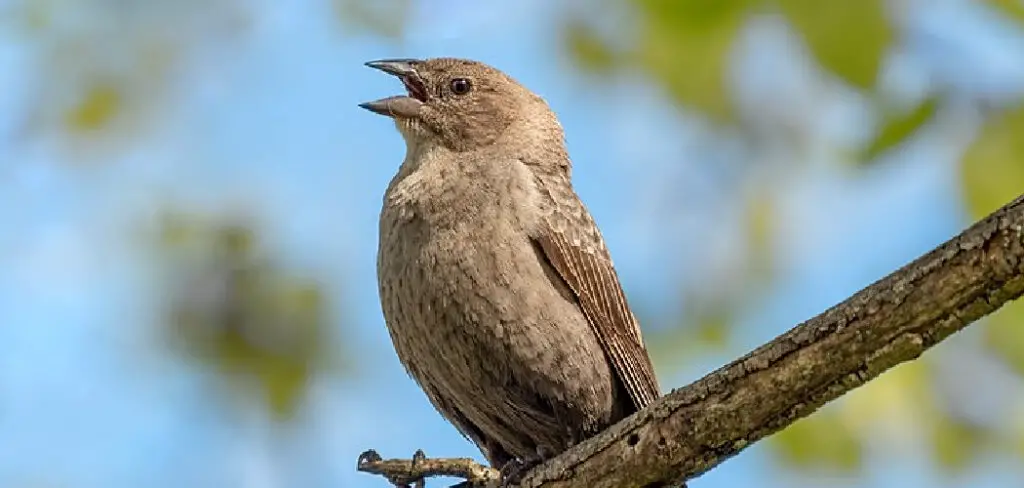
To mitigate the impact of cowbirds, understanding their habits and implementing effective strategies is crucial. From employing deterrent methods to creating bird-friendly habitats, there are various approaches to reduce cowbird presence and safeguard native bird populations.
By implementing these techniques, individuals and communities can actively contribute to the preservation of avian biodiversity while promoting the health and balance of local ecosystems. This article delves into how to get rid of cow birds, offering insights and practical tips for effectively getting rid of these notorious avian intruders.
Definition and Characteristics of Cowbirds
Cowbirds belong to the genus Molothrus, part of the family Icteridae, and are found primarily across North America. The most commonly encountered species, the brown-headed cowbird (Molothrus ater), exhibits sexual dimorphism: males are glossy black with a brown head, while females sport a more subdued brownish plumage. Cowbirds are medium-sized, ranging from 6.3 to 8.7 inches in length, with a stout shape and a short, thick beak that is well-adapted to their omnivorous diet.
One of their most defining behaviors is brood parasitism; instead of building their own nests, female cowbirds lay their eggs in the nests of other bird species, which can lead to reduced survival rates for the host birds’ own chicks. This unique reproductive strategy has made cowbirds a subject of extensive study and conservation concern.
Understanding Cowbird Behavior
Essential to controlling cowbirds is a thorough understanding of their behavior, particularly their nesting habits. Cowbirds are known to be opportunistic and are often found in areas altered by agricultural activities or urban development, as these habitats tend to provide ample foraging opportunities. They exhibit a tendency to follow large mammals to feed on insects stirred up from the ground, which is how they originally earned their name.
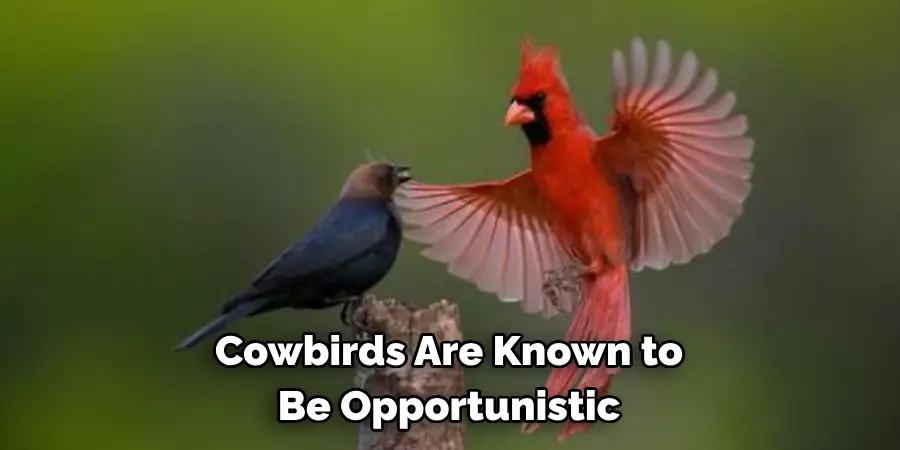
Female cowbirds have a unique ability to produce a high number of eggs during the breeding season, laying one egg per day over the course of several weeks, and distributing those eggs across many different nests. This prolific reproductive strategy means they can affect a substantial number of host nests in a relatively short time. Understanding these behaviors is crucial for developing methods to mitigate their impacts on native bird populations.
Identification of Target Species for Parasitic Nesting
Cowbirds exhibit a lack of selectivity when it comes to choosing host species for their nest parasitism, impacting a wide range of small to medium-sized songbirds. Some of the most commonly targeted species include the warblers, vireos, and sparrows. The cowbirds favor nests that are well-concealed, such as those built in dense shrubbery or high in the treetops, as they offer better protection for their eggs.
Host species vary in their ability to recognize and reject cowbird eggs; some, like the red-eyed vireo, are often victims to cowbird parasitism due to their less aggressive approach towards foreign eggs, while others, like the American robin, are more adept at identifying and ejecting the intrusive eggs from their nests. To effectively combat the spread of cowbird parasitism, it is crucial to identify and monitor the nests of these susceptible species, especially in areas where cowbird presence is notable.
Impact on Nesting Success of Native Birds
The impact of cowbird parasitism on native bird species can be profound and multi-faceted. Native birds that inadvertently host cowbird eggs expend valuable resources incubating them and feeding the often larger and more aggressive cowbird chicks. This can lead to reduced hatching success and survival rates of the native birds’ own offspring, as the cowbird chick outcompetes them for food and parental care. In some cases, these native chicks may be pushed out of the nest entirely or starve due to the imbalance in care.
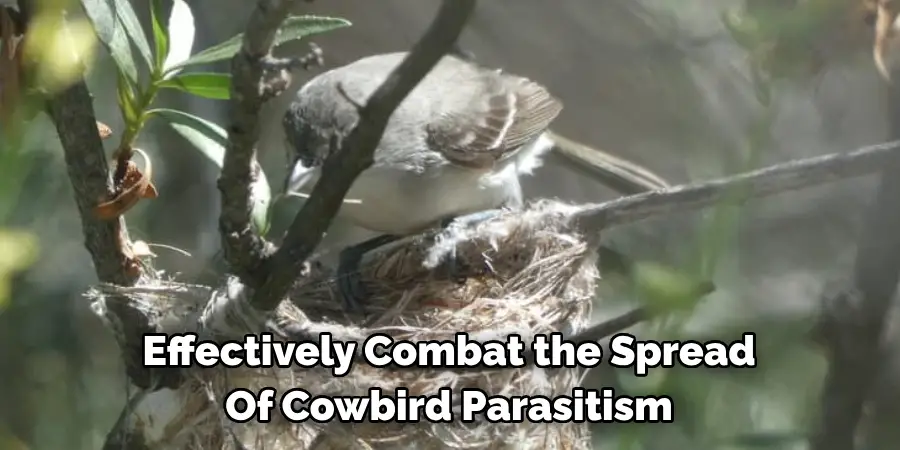
Over time, the cumulative effect of cowbird parasitism can lead to declining populations of certain native birds, skewing the ecosystem and potentially causing long-term ecological repercussions. Conservationists are particularly concerned with species already vulnerable due to habitat loss or other threats, as brood parasitism by cowbirds can exacerbate their decline.
10 Methods How To Get Rid of Cow Birds
1. Nest Monitoring and Removal:
Cowbirds are notorious for their parasitic nesting behavior, laying their eggs in the nests of other bird species. Regularly monitoring bird nests in your area and removing cowbird eggs can help prevent them from hatching and disrupting the nesting success of native birds. By identifying and removing cowbird eggs promptly, you can reduce their impact on local bird populations.
Monitoring bird nests should be done carefully and with minimal disturbance to the nest and its occupants. It is recommended to observe nests from a safe distance using binoculars or a zoom camera lens. This will reduce stress on the parent birds and prevent them from abandoning their nest.
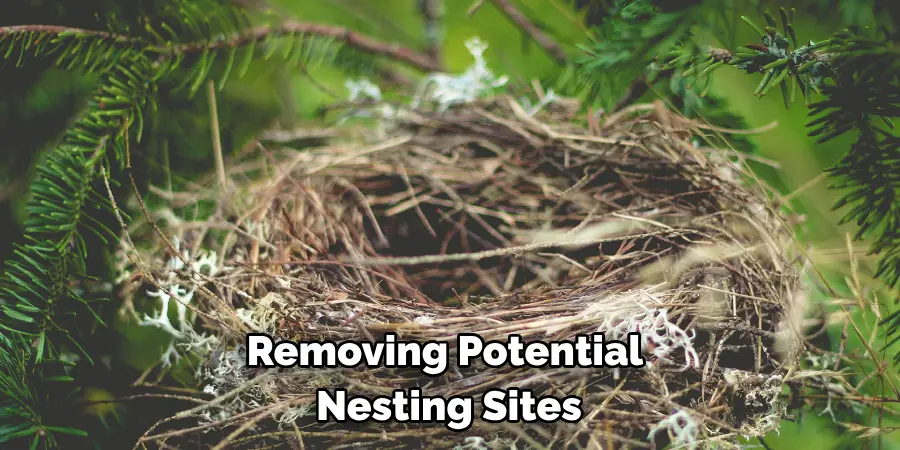
2. Deterrents:
Implementing deterrents is an effective way to discourage cowbirds from frequenting your property. Visual deterrents such as scarecrows, reflective objects, or predator decoys can help create an environment that cowbirds perceive as unsafe for nesting. These visual cues can disrupt their nesting behavior and encourage them to seek nesting sites elsewhere. Additionally, physical barriers such as netting or fencing can prevent cowbirds from accessing areas where they may want to build nests.
Other deterrents that can be implemented include auditory distractions, such as playing recordings of distress calls or predator sounds. These noises can startle cowbirds and cause them to avoid the area.
Furthermore, removing potential nesting sites can also serve as a deterrent for cowbirds. This includes removing old nests from trees and structures, as well as keeping outdoor areas tidy and free of debris that can serve as potential nesting materials.

3. Nest Modifications:
Modifying bird nests to make them less appealing to cowbirds can also help mitigate their impact. Installing nest boxes with entrance hole sizes that are too small for cowbirds but suitable for native bird species can prevent cowbirds from accessing these nesting sites. Additionally, positioning nest boxes in locations that are less accessible to cowbirds, such as higher up in trees or in more secluded areas, can further discourage their presence.
This method of nest modification not only reduces the likelihood of cowbird parasitism, but also promotes the success of native bird species. In addition to providing suitable nesting sites for birds, creating a diverse habitat with varying levels of vegetation can also be beneficial. This type of landscape provides better shelter and hiding places for smaller birds, making it harder for cowbirds to locate their nests.
4. Habitat Management:
Managing the habitat around your property to make it less favorable for cowbirds can help reduce their numbers. Creating dense vegetation and shrubbery that provide cover for smaller bird species while making it difficult for cowbirds to navigate can deter them from establishing territories in the area.
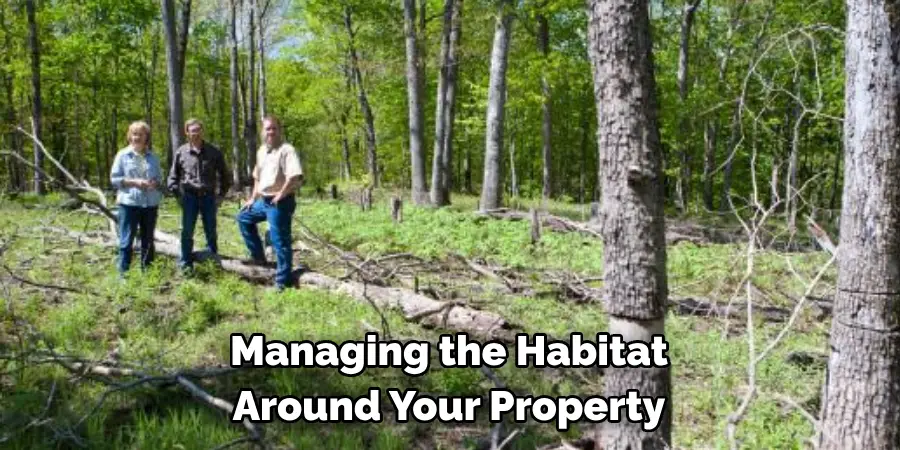
Limiting open spaces and maintaining natural barriers can also help create a less inviting environment for cowbirds. In addition, avoiding the use of bird feeders and removing any leftover food or seeds can discourage cowbirds from scavenging in your backyard.
To further prevent cowbird populations from growing, it is important to control their potential nesting sites. This includes keeping grass and shrubbery trimmed to limit potential nesting areas for cowbirds. You should also inspect your property regularly for any abandoned nests and remove them promptly to prevent cowbirds from reusing them.
5. Providing Alternative Nesting Sites:
Offering alternative nesting sites for native bird species can help divert their attention away from cowbird parasitism. Installing multiple birdhouses or nesting platforms throughout your property can provide native birds with suitable nesting options away from cowbird-prone areas. By providing attractive alternatives, you can encourage native birds to nest in locations where cowbirds are less likely to parasitize their nests.
In addition to providing nesting alternatives, it is important to maintain and monitor these sites. Regularly cleaning out old nests and making necessary repairs can ensure that the structures remain suitable for use by native birds. Monitoring these sites can also help identify any potential threats or disruptions to the nesting process.
6. Egg Addling:
Egg addling involves removing cowbird eggs from nests and replacing them with non-viable eggs, effectively preventing them from hatching. This method disrupts the cowbird’s reproductive cycle and reduces their impact on native bird populations. However, egg addling should be done with caution and in compliance with local wildlife regulations to ensure the well-being of both native and non-native bird species.
Egg addling is a highly debated and controversial method of managing cowbird populations. While it has been successful in reducing the number of invasive cowbirds and protecting native birds, some argue that it is not a humane solution. As with any wildlife management technique, there are pros and cons to consider.
One of the benefits of egg addling is that it does not involve killing any birds. This method simply renders the cowbird eggs non-viable, allowing them to be removed without harm. It is also a cost-effective solution that can be implemented on a large scale, making it suitable for managing cowbird populations in different areas.
7. Trapping and Removal:
Trapping and removing cowbirds from your property can be an effective short-term solution for reducing their numbers. Live traps specifically designed for capturing birds can be baited with food sources attractive to cowbirds, such as seeds or grains. Once captured, cowbirds can be safely relocated to more suitable habitats away from areas where they pose a threat to native bird populations. It is important to note that in some areas, trapping and relocating cowbirds may require a permit from local wildlife authorities.
In addition to trapping, other methods of removal can also be utilized. Targeted shooting or the use of specialized bird control devices, such as visual deterrents or sound repellents, can help discourage cowbirds from frequenting your property. These methods should be used in conjunction with proper habitat management practices, such as removing or modifying cowbird nesting sites and providing alternative food sources for native birds.

8. Collaboration with Wildlife Agencies:
Collaborating with local wildlife agencies and conservation organizations can provide valuable resources and expertise for managing cowbird populations. These agencies may offer guidance on effective management strategies, provide training on bird identification and monitoring techniques, and assist with the implementation of conservation initiatives aimed at protecting native bird species from cowbird parasitism. Additionally, collaborating with these agencies can help foster a network of support and communication between landowners, researchers, and policymakers.
When working with wildlife agencies, it is important to establish clear goals and objectives for cowbird management. This may include setting population targets for native bird species or identifying priority areas for conservation efforts. By aligning with the goals of wildlife agencies, landowners can ensure that their management practices are in line with larger conservation efforts and contribute to the overall health of ecosystems.
9. Public Education and Outreach:
Educating communities and neighbors about the detrimental effects of cowbird parasitism on native bird populations can help garner support for conservation efforts. Public outreach initiatives, workshops, and educational materials can raise awareness about the importance of preserving native bird habitats and the role individuals can play in mitigating the impact of cowbirds.
By fostering a sense of environmental stewardship, communities can work together to protect their local bird populations from invasive species like cowbirds. Additionally, educating the public about the impact of cowbird parasitism can encourage responsible pet ownership and discourage feeding of wild animals. This can help to reduce interactions between domestic cats and birds, as well as prevent potential issues with attractants such as bird feeders.
10. Long-term Habitat Conservation:
Implementing long-term habitat conservation measures can help address the underlying factors contributing to cowbird parasitism. Protecting and restoring natural habitats, maintaining biodiversity, and minimizing habitat fragmentation can create healthier ecosystems that are more resilient to invasive species.
By promoting sustainable land management practices and preserving critical wildlife habitats, we can help safeguard native bird populations and prevent the spread of cowbirds in the long term. Additionally, implementing measures such as predator management and targeted cowbird removal efforts can also help reduce parasitism rates and protect vulnerable bird species.
Bird-Friendly Practices to Prevent Cowbird Infestation
Implementing bird-friendly practices can significantly reduce the likelihood of cowbird infestation in native bird territories. Maintaining a diverse ecosystem through the planting of native vegetation helps support a wide range of native bird species, creating an environment less hospitable to cowbirds. Limiting the use of bird feeders or using feeder designs that discourage cowbirds from feeding can also help to reduce their presence. Furthermore, engaging in habitat restoration projects that encourage the growth of thick shrubs and trees can provide natural barriers against cowbirds, who prefer more open spaces for accessing host nests.
Selective Landscaping to Promote Native Bird Habitats

Selective landscaping is crucial for promoting native bird habitats and deterring invasive cowbird populations. By cultivating an environment that caters to the needs of native species, landowners can create areas where cowbirds are less likely to thrive. This requires the strategic planting of native flora that provide food, shelter, and nesting sites appropriate to the indigenous bird species. Prioritizing the growth of thickets and canopy trees can offer protective cover and reduce the visibility of nests to cowbirds seeking to lay their eggs. Additionally, the preservation of understory vegetation and dead trees can furnish critical nesting materials and natural food sources that benefit native birds’ lifestyle requirements while remaining unattractive to cowbirds.
Long-term Strategies for Cowbird Control
For a sustainable approach to cowbird control, long-term strategies focus on altering the environment to discourage cowbird occupation and breeding. This involves a multifaceted plan that combines habitat manipulation, ongoing monitoring, and community involvement. Key to these efforts is the restoration of dense forests and shrublands, which are less attractive to cowbirds compared to open or disturbed habitats where they typically thrive. Regular monitoring programs can track cowbird populations and gauge the effectiveness of control measures, allowing for timely adjustments. Additionally, public education on the impacts of cowbirds and community-based conservation initiatives can mobilize broader support for native bird species, establishing a culture of stewardship.
Conclusion
In conclusion, effective management of cowbird populations requires a multifaceted approach that combines proactive strategies with long-term conservation efforts. By implementing methods such as nest monitoring, deterrents, and habitat management, individuals can help reduce the impact of cowbirds on native bird populations.
Providing alternative nesting sites, collaborating with wildlife agencies, and engaging in public education initiatives further strengthen our ability to mitigate the threat posed by cowbirds. However, it is essential to recognize that addressing the underlying factors driving cowbird parasitism, such as habitat loss and fragmentation, requires sustained commitment to habitat conservation and restoration. Thanks for reading, and we hope this has given you some inspiration on how to get rid of cow birds!
About
Outdoor Fixes is a distinguished figure in the world of Diy design, with a decade of expertise creating innovative and sustainable Diy solutions.
His professional focus lies in merging traditional craftsmanship with modern manufacturing techniques,
fostering designs that are both practical and environmentally conscious. As the author of diy,
outdoorfixes delves into the art and science of outdoorfixes-making, inspiring artisans and industry professionals alike.
Education RMIT University
(Melbourne, Australia) Associate Degree in Design (Outdoor Fixes) Focus on sustainable design, industry-driven projects,
and practical craftsmanship. Gained hands-on experience with traditional and digital manufacturing tools, such as CAD and CNC software.
Nottingham Trent University
(United Kingdom) Bachelor’s in outdoorfixes.com and Product Design (Honors) Specialized in product design with a focus on blending creativity with production
techniques. Participated in industry projects, working with companies like John Lewis and Vitsoe to gain real-world insights.
Publications and Impact
In diy, Outdoor Fixes his insights on indoor design processes, materials, and strategies for efficient production.
His writing bridges the gap between artisan knowledge and modern industry needs, making it a must-read for both budding designers and seasoned professionals.

